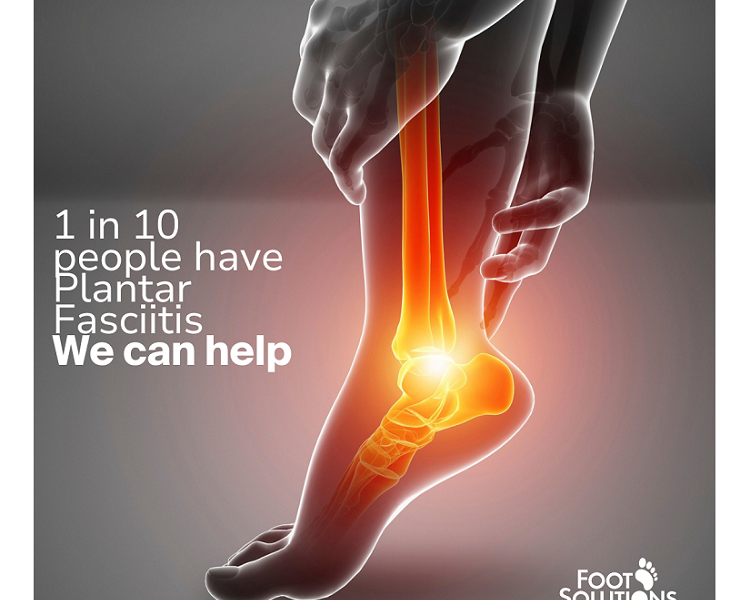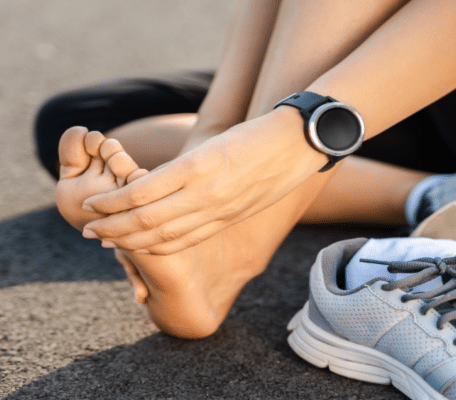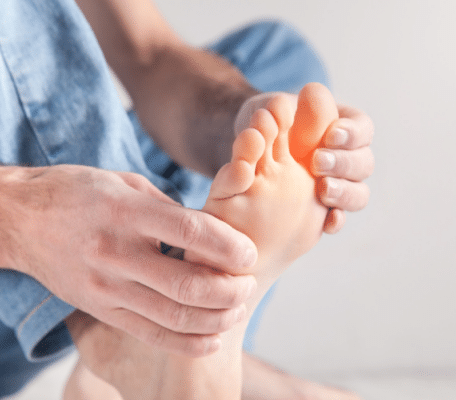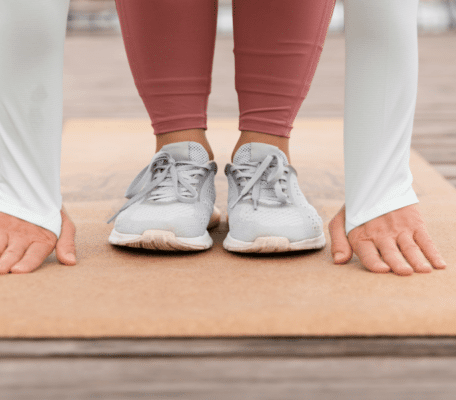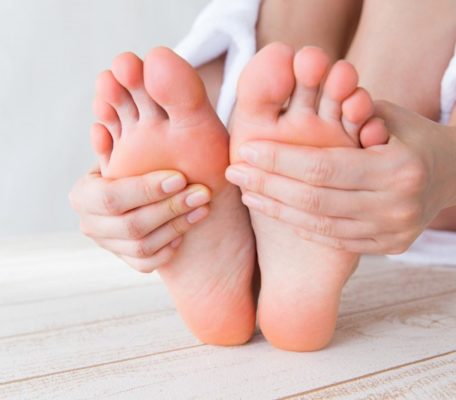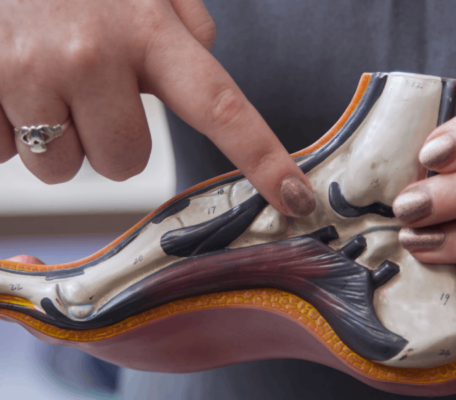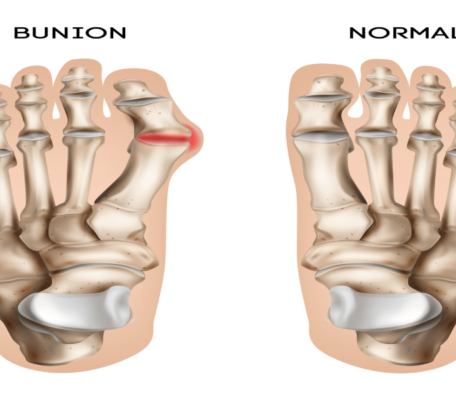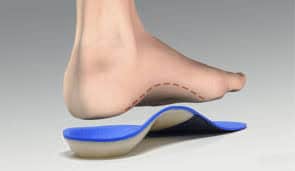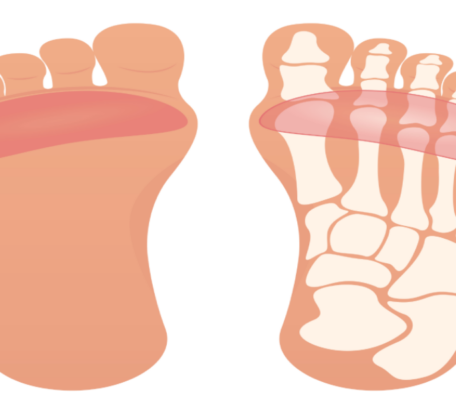Plantar Fasciitis is a painful foot condition, common to runners and those who have long periods of standing or walking in their daily routine. It occurs when the plantar fascia, the band of tissue connecting the base of the toes to the heel, becomes inflamed or torn, and you may notice it most when you first get up after sitting or lying down for a long time.
Plantar Fasciitis can be debilitating, making even the shortest walk very painful, and it requires long periods of rest to heal. The condition often develops as a result of excessive stress on the feet, so can become a problem when you exercise a lot, during pregnancy or if you are overweight. Learning more about the role of high quality shoes and orthotics in the prevention and relief of plantar fasciitis can help you to understand the condition and what you can do to look after your feet more effectively in the future.
Preventing and Treating Plantar Fasciitis
You may notice that your feet feel increasingly painful in the mornings or evenings and you may even have experienced a sharp pain in one heel. These can be the first signs of plantar fasciitis and you need to pay attention to your body and alleviate these symptoms to avoid worsening pain.
Prevention is better than cure and giving your feet the support they need can stop plantar fasciitis from developing in the first place, which is a lot easier than treating it once it has occurred. However, if you have only realised that you may have plantar fasciitis when you are already in pain, it is not too late to resolve the problem and prevent future episodes if you treat it correctly now.
Why Use Orthotics?
Orthotics are shaped devices that sit inside your shoes and optimise the position of your feet so that they are supported in daily activities and in healing. A poorly supported foot is susceptible to pain and reduced mobility, so it is a good idea to use orthotics to increase support and ensure that your weight is placed more evenly through the foot, resolving pain and inflammation and creating space to heal.
If you use orthotics, they should be worn at all times to ensure the correct foot position for your feet, and custom orthotics are the most appropriate choice. There is simply no contest between an ‘off the shelf’ product that is designed for the average foot and a device that is created from exact measurements to support the contours of your foot perfectly.
Orthotics can relieve pressure in problem areas of the foot and help provide space for injuries like plantar fasciitis to heal, and people are often surprised by the huge difference this can make. Custom orthotics can make a big difference to your comfort level on a daily basis as well as helping to prevent and correct problems such as bunions, heel spurs and flat feet, so don’t be afraid to talk to us at Foot Solutions and find out if this could be a good option for you.
How to Manage and Treat Plantar Fasciitis
Problems such as plantar fasciitis are frustratingly common, but that doesn’t mean you have to suffer. We suggest the following measures to take care of your feet and protect against problems such as this:
Wearing the right shoes. Many people are not aware of how much impact their shoes have on the health of their feet. Wearing shoes that are too tight or that do not support your feet in the right places can put a huge amount of pressure in certain areas of the foot and lead to painful problems. It can make a huge difference to your daily comfort when you wear shoes that are well fitted and suit the shape of your feet, and you should always take advice from professional fitters when you are buying new shoes. It is also important to wear shoes that suit your activities, so ensuring that you wear road running shoes when you run, for instance, as this will offer your feet the best level of protection from impact and injury.
Using orthotics or inserts. As previously discussed, custom orthotics can be a great solution to problems with the feet such as plantar fasciitis. They can change the way the foot is supported within the shoe and enable much more effective movement, relieving the pressure on the foot and allowing for it to heal. Over the counter orthotics may help to a certain degree, but these are not designed to fit the contours of your foot and an approach that is tailored to your unique foot shape will be much more effective. Gel pads may be another useful measure to try inside your shoes, as these can alleviate pressure and increase comfort.
Stretching exercises. Carrying out warm up and cool down stretches properly can help to prevent plantar fasciitis and protect the muscles and bones of the feet when you exercise. However, when you have plantar fasciitis, it is important to take a break from your regular forms of exercise as these may be the cause of the problem! There are some specific exercises that can help to increase flexibility in the foot and reduce the pain you are experiencing, and these can be carried out several times each day. Read on to find out more about these exercises.
Physical therapy. It can be helpful to learn some appropriate exercises to stretch out the plantar fascia in the right way and encourage the area to heal, as well as finding out about minor changes you can make to the way you walk, run or stand to prevent further problems from developing in the future. You may be able to refer yourself for physical therapy or you may require a referral from your doctor, and this may be especially useful if you experience plantar fasciitis repeatedly.
Pain medications. Although it is not a long term solution, you may find that taking pain medications helps to relieve the pain in your feet while you are suffering with plantar fasciitis, and ibuprofen based medication may help to relieve the inflammation and promote healing. You can discuss pain relief options with your doctor or pharmacist to find out what may be most appropriate for you.
Shockwave therapy. In extreme cases or if plantar fasciitis is a severe and recurrent problem for you, shockwave therapy may be suggested as a treatment option. This is a non-invasive procedure that delivers sound waves into the soft tissues of the foot, where the injury has occurred, in order to promote tissue repair and regeneration. You can ask your doctor about this type of treatment if you feel it may be appropriate for you.
Steroid injections. If you experience severe plantar fasciitis, you may find that you are offered steroid injections to relieve the pain and reduce inflammation in the affected area. You can talk to your doctor to find out if this would be a suitable treatment for you.
Visit Foot Solutions to find out more about protecting your feet from painful problems such as plantar fasciitis, and we will help you to explore the best options for you and your lifestyle.
Stretches for Plantar Fasciitis
Because plantar fasciitis affects the fascia in the sole of the foot, which helps to maintain the arch of the foot, strengthening the affected area and the muscles and ligaments that support the arch can help with healing and prevent further problems. You may notice heel pain associated with plantar fasciitis if you have recently started exercising or changed the way you exercise, if you have changed your footwear or if you have put on weight. If this is the case, you may find the following exercises very helpful:
Foot roller. You can use a foot roller or a rolling pin or even a tin or can to do this exercise, seated on a chair with the roller under your foot. Simply roll the foot backwards and forwards from the heel to the ball of the foot for 2-5 minutes.
Toe stretch. Sitting with the foot across the opposite knee, pull the toes and foot back towards the shin with your hand, hold for ten seconds and then relax. Repeat 6-10 times.
Calf stretch. Standing facing the wall, take a step back on the affected leg and bend the front knee so that the rear heel is on the ground. Bend the front knee towards the wall, keeping the back leg straight with the heel on the floor. Hold for ten seconds, then relax. Repeat 6-10 times.
Lying calf stretch. Lying on your back, place a belt or scarf around your foot and pull it up slowly until you feel your calf stretch. Keep the foot relaxed as you hold for ten seconds and then relax. Repeat 6-10 times.
There are other exercises which may also be helpful and you can find out more about these from your doctor or a physiotherapist.
Visit Foot Solutions to treat your feet
Looking after your feet will help to prevent foot conditions such as plantar fasciitis and keep your feet feeling fit and pain free. Our friendly team at Foot Solutions can help you to find footwear that fits you well and show you how to protect your feet as you move through your daily activities. Pop into one of our stores and talk to our experts to start taking care of your feet today.

